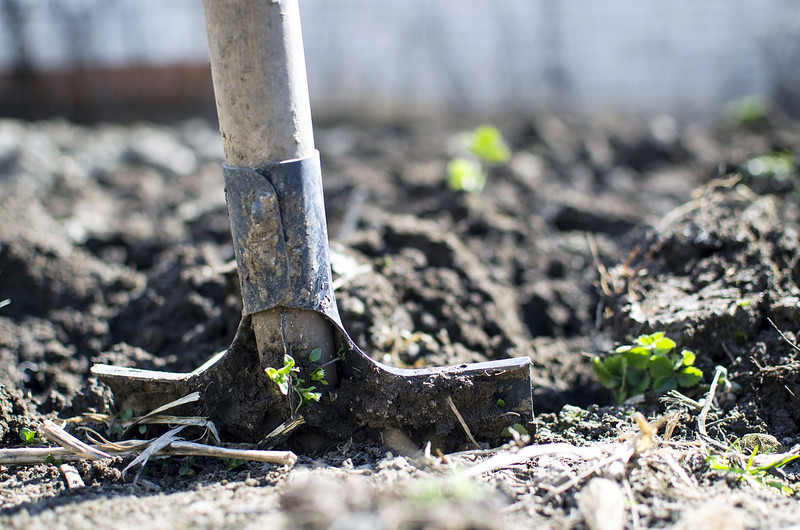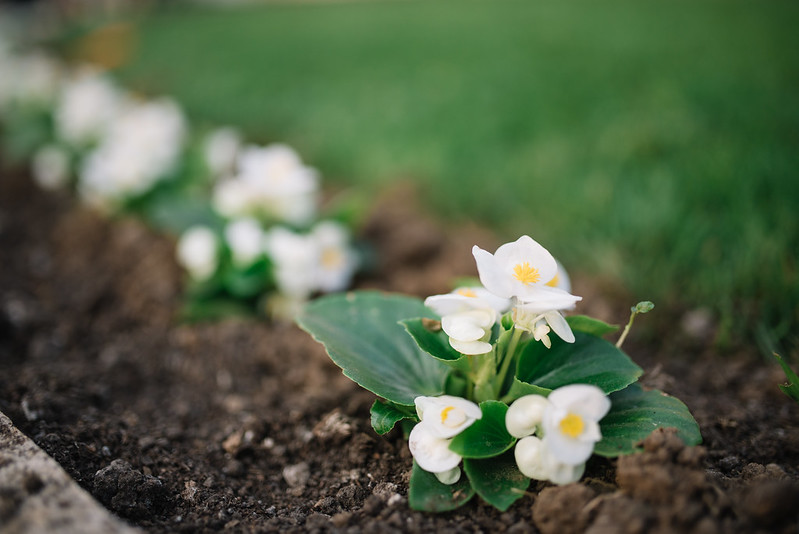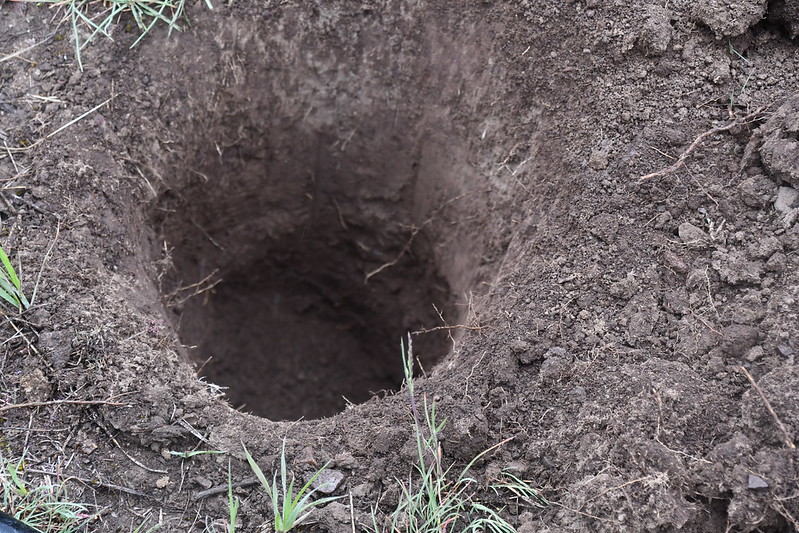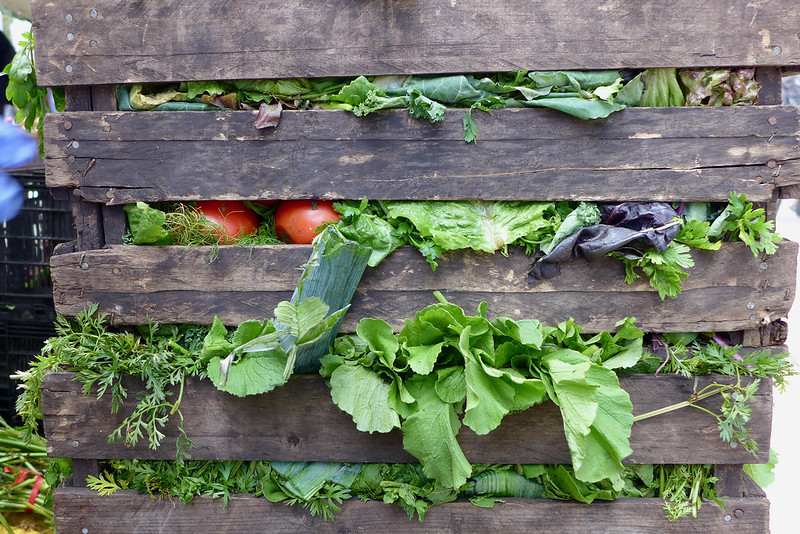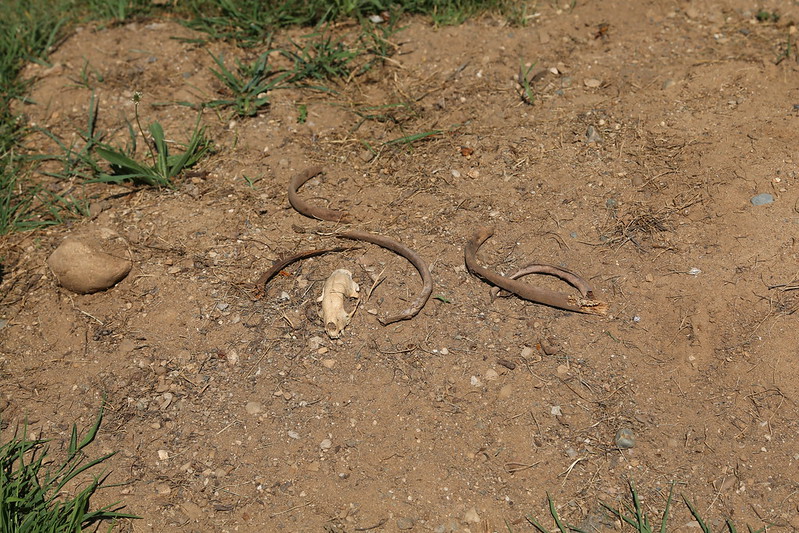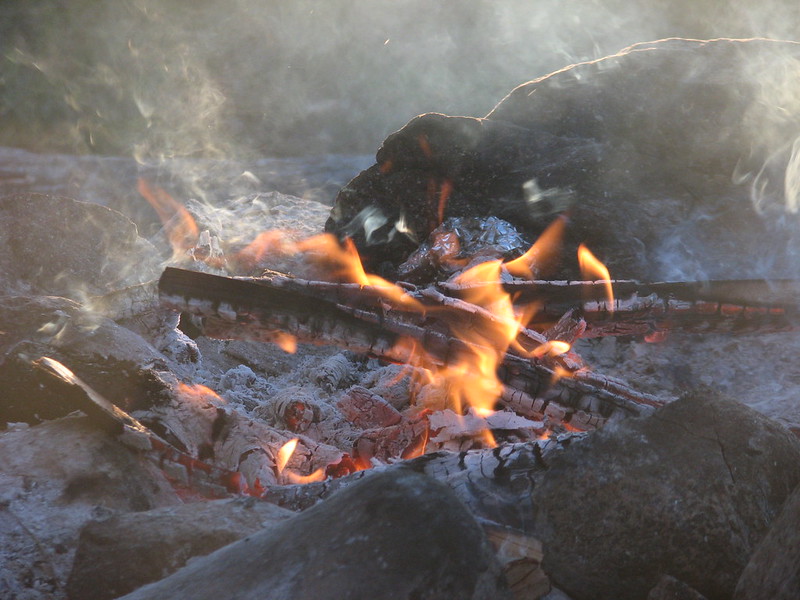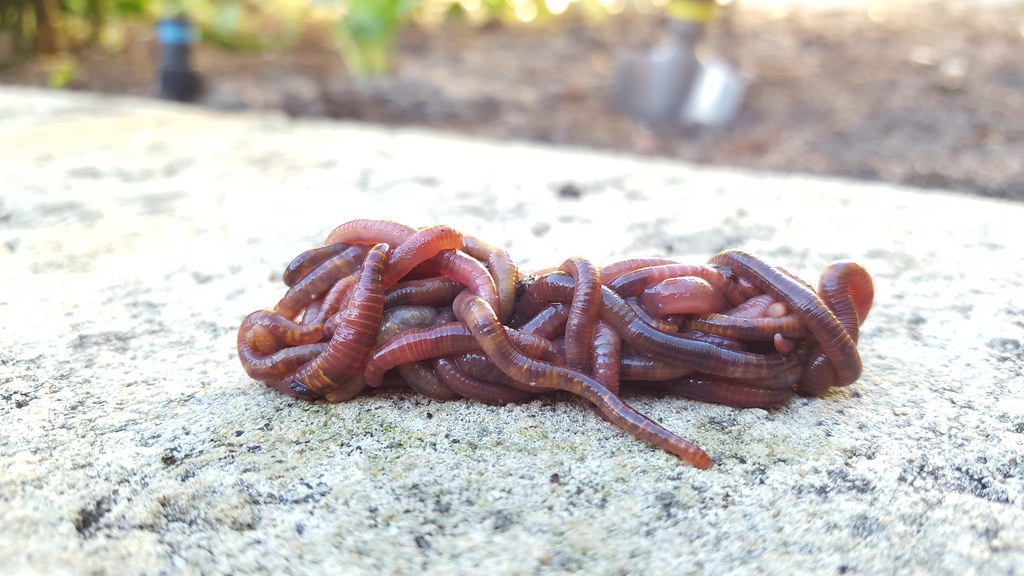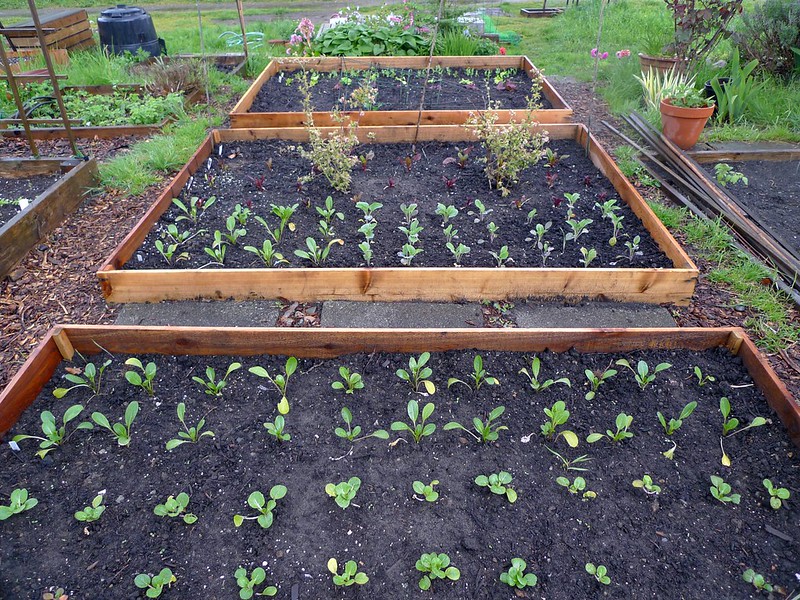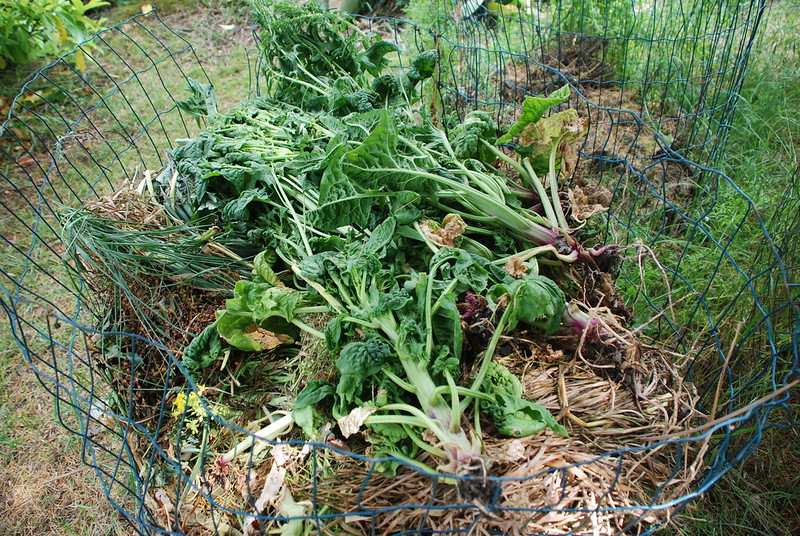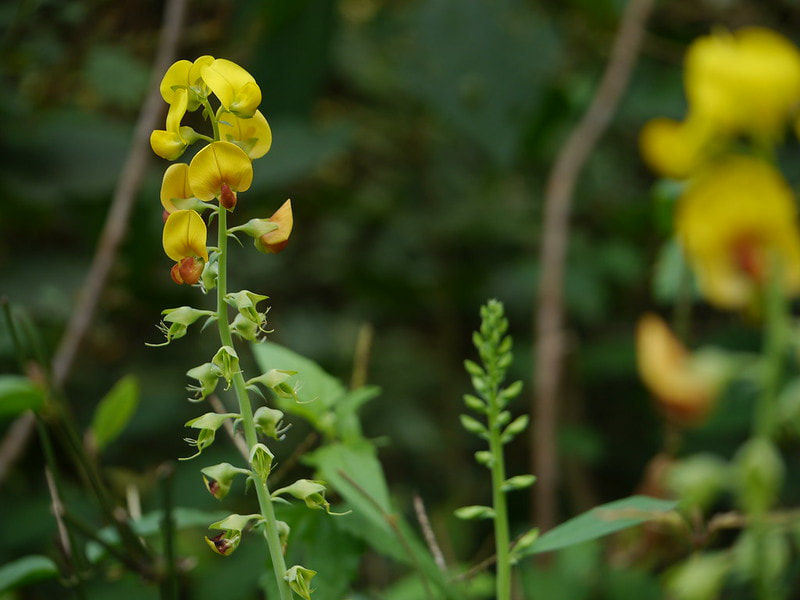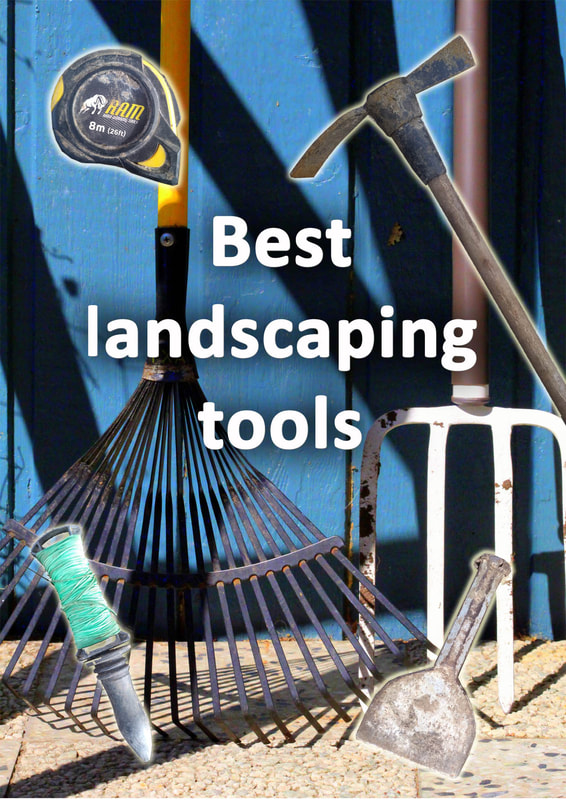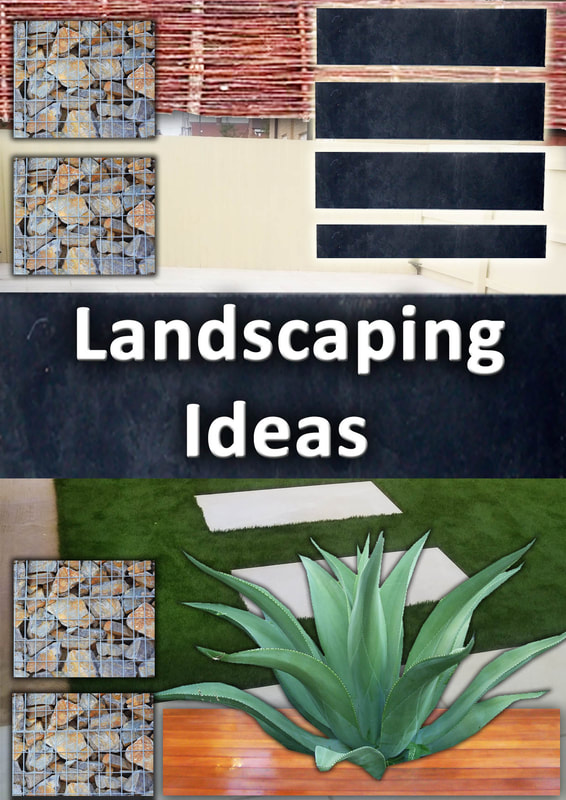|
This article contains affiliate links
Improving your gardens soil is the key to more successful gardening and growing robust, healthy plants.
One of the reasons gardeners struggle improving their soil is failing to understand it is a living breathing, entity. Topsoil is a resource which takes millions of years of erosion and biological process to form. Healthy topsoil is a complex, ecosystem of organic matter, minerals, rock dust, bacteria, fungi and invertebrates. The problem is, human impacts on the ground such as synthetic fertilisers, chemical contamination, compaction and excessive digging can lead to soil degradation. This is where nutrients leach away or soil life perishes due to a lack of organic matter, compaction or excessive disturbance. The key to improving your garden soil is rebalancing its ingredients and ecosystems. This intern will improve its structure, workability, drainage and fertility. Diagnosing your soil type
All soils are different; this is because all localities share varying bedrock and vegetation types. The latter are for the most part what soils are made up of. If for instance you live in a river basin which has clay soil it is due to years of sedimentary deposits.
Clay soils are generally made up of eroded particles of shale rocks. These fine and dense particles absorb moisture readily and can compact densely over time. This is why many gardeners dislike clay soil as it can become sodden and difficult to work. Similarly sandy soils form from the erosion and accumulation of sandstone particles. All soil composition is a direct result of its geographical location. However this is not to say all soil is destined to be either good or bad for gardening. There are pros and cons of all soil types. The key to improving your particular garden soil is to work to its strengths! Through gradual amelioration your soil can become the very best, regardless of its current properties. Clay
One of the most notorious soil types you hear gardeners complaining about is clay. This is because clay compacts easily especially when wet, during warm summers it dries out and bakes hard like rock. This makes it extremely laborious to work and for plants roots to penetrate. The positive aspect of clay soil is it retains both nutrients and moisture very well.
How to improve clay soil
To improve clay soils workability, texture and drainage you must deny its ability to clod and stick together. This will enable water to drain better and allow oxygen to penetrate the soils particles.
The best way to do this is add course, organic material. Material such pine needles, wood chips and broken down sticks will not just dissolve and allow clods to fall apart. By working in such material overtime organic soil life will start to multiply. This will add gasses into the particles helping to break them apart. As invertebrates such as worms become greater in number their air chambers will help to oxygenate the soil. Improving clay soil relies upon a continuous system of adding such organic material every season. Grit and gypsum can also be added to help break clay soil apart. Sandy
Just as clay soil is too heavy, sandy soil is light, free draining and finds it difficult to retain nutrients. On the plus side sandy soils are easy to work and warm up quickly during the spring time. Plants find it easy for their roots to penetrate deeply, the challenge is getting enough sustained fertility within its structure without it leaching away. It is good to remember some plants do thrive in these soils naturally.
How to improve sandy soil
If you have sandy soil it is important to remember that the freest draining, larger sand particles will be near the surface. Therefore it is beneficial to test dig the soil to see what its composition is like further down.
It is common to find a denser, cloggier, powdery soil much deeper down. This can be mixed into the top layers with a system of double digging. Then by mixing in plenty of course organic matter and manure you can boost moisture retention and fertility. As with clay soil this needs to be a continuous annual process. However by doing this every few years will make a significant improvement to your sandy soil. Loamy
By far one of the best soil types going is a loamy soil. This generally has a combination of the attributes of both sandy and clay soils. These soils are easy to dig but still have a clump forming nature.
This makes it easy for roots to penetrate but easy for both nutrients and moisture to be retained. If you have a loose, crumbly soil which you can form a ball in your hand it is most certainly a loam. As there is not really any need to change the texture of these soils a regular amelioration schedule will be adequate. Aim at boosting soil ecology by adding plenty of organic material and manure. PH
Soil PH is the measurement of either how acidic or alkali your soil is. The PH scale which measures this metric spans from 1-14, 1 being the most extreme end of acidity and 14 being the highest level of alkali.
Most garden plants prefer a neutral PH hence around 6 or 7. When contemplating improving your garden soil it is advantageous to find out what PH your soil sits at. This will govern what types of plants you are able to grow successfully. Generally the majority of plants prefer neutral or slightly alkali soil. If you do have acidic soil you can add more calcareous materials such as lime and chalk. These will help to neutralise acidic conditions and create a more alkali soil. There are now digital soil testers which can measure your soils acidity at the touch of a button. Essential components of healthy soil:
All soil needs a good balance of healthy components in order for plants to thrive. If you find it challenging to get plants to grow well in your garden, chances are your soil lacks some of these essential components.
The best way to approach improving your soil is to begin to familiarise yourself with these healthy components listed below. By identifying possible deficiencies in these and gradually working them into the soil is sure to bring effective results. Organic matter
One of the most common reasons for bad soil is the lack of organic matter present. This is no real surprise as in nature organic matter is continuously replaced. Fallen leaves, dead plants and animals all are a continuous source of organic matter to the soil. This keeps micro-organisms fed leading to vibrant soil ecology. Modern gardening typically aims to clear up fallen leaves and throw away dead or dying pants. This leads to a slow reduction of organic matter hence nutrients from the soil.
Free draining particles
Free draining particles can be a characteristic of the soils original bedrock, for example sandy soils are incredibly permeable. Generally free draining particles are ones which allow for small air gaps within the soils structure. This enables water to pass through freely and is most commonly attributed to organic matter.
Moisture retaining particles
A soils moisture content is extremely important for healthy plant growth. Having consistent moisture not too wet or not too dry is optimum. Not only is this beneficial for the plants themselves but also for abundant soil life. This helps bacteria, fungi and invertebrates to thrive breaking down organic particles and producing fertility. Moisture retaining particles can be attributed to absorbent soil articles such as clay and organic material.
Minerals
Soil minerals are generally derived from the weathered rock particles which originally formed the soil. Some of the most mineral rich soils on the planet are within the geographical reach of volcanic eruptions. This historical layering of ash and larva results in high levels of trace minerals. Mineral rock dusts can be bought in powder form and worked into the soil or added during composting.
Nitrogen
Nitrogen is a nutrient absolutely essential for plant growth! It helps the plant to grow its cells and carry out essential biological functions. A nitrogen deficiency in the soil will usually translate into stunted growth and premature death in plants. Nitrogen is a nutrient which needs to be replenished constantly hence it is a component part of most seasonal fertilisers. The best way to add nitrogen to your soil is mix in green organic matter, compost and manure.
Phosphates
Phosphorous is an extremely important plant nutrient and has an integral role helping the plant feed itself. It has a key importance in the metabolism of sugars, energy transfer and cell division for the vital process of photosynthesis in plants. In nature phosphorous is added to the soil by dead animals and droppings. This can be replicated by adding bone meal to your soil.
Potassium
Potassium commonly referred to as potash is a plant nutrient that particularly helps to induce flowering and fruiting. This makes it especially important for fruit and vegetable gardeners. This nutrient also helps plants to utilise available water and resist drought conditions. Potassium is commonly added to the soil by mixing in ashes from burnt, woody materials. However potassium like nitrogen and phosphorous can be added with a good quality organic fertiliser.
Oxygen
Oxygen is essential for good drainage and healthy soil life. If your garden soil is currently compacted make sure you dig it well and mix in plenty of organic matter. Over time soil life will help to keep consistent oxygen levels within the soil structure.
Water
Soil needs to be moisture retentive but at the same time well drained. Too much water will starve out oxygen and there is a risk the soil will become either stagnant or compacted. If you live in a naturally boggy area build raised beds to make your soil more free draining. During the summer months keeping your soil well irrigated is also vital to keep soil life hydrated and healthy.
Soil life
Soil life’s importance is generally underrated but a vital, component part of all healthy soil. To improve your gardens soil you must take steps to boost soil ecosystems.
This can be done by digging the soil as little as possible. This prevents sunlight and extreme temperatures killing submerged microorganisms. Organic matter can be added regularly preferably by mulching from the top as happens in nature. This is the best way to encourage soil dwelling invertebrates, insects, bacteria and fungi. All of which are essential for healthy plants and soil. Working the soil
If your soil has not been worked in a very long while it is probably nutrient poor and compacted. The only way to begin to solve this is by digging over the soil. Digging and turning the ground adds oxygen and begins to break up clotted particles. This gives it a loose structure so it can begin to except nutrients and moisture. There are two main ways of doing this; by hand or by mechanical methods such as tilling.
Double digging
Most of the time when starting to dig over a new piece of soil gardeners will do a single dig. This is simply the depth of one spade or a spit. This is a good start to start working the soil to a loose structure.
However double digging is a much more effective method of working your garden soil. This is especially the case if the ground has not been worked in a very long time. Not only does digging two spits down provide a greater depth it can break through the underlying hardpan. The hardpan is a compacted layer of ground which lies just under the top 30cm of soil. Breaking through this enables plants roots to reach much deeper depths and makes for better drainage. Typically a linear trench is dug two spades deep and fresh manure is laid in the bottom. The trench is then backfilled and the process is repeated. Tilling
A great way to prepare extensive areas of ground is by tilling or rotivating. This is traditionally done by a mechanical tiller. These machines come in a range of sizes and have rotivating blades which cut into the soil. These machines do come in a wide range of capability levels. If your ground is extremely compacted it may need to be loosened by hand first. Tilling is a great way to work large areas of ground to a fine, friable texture.
Building raised beds
One certain way to improve your garden soil is to build raised beds. This can be done in a number of ways and with varying materials. Raised beds enable you to buy in good quality, humus, rich soil and heap this up on top of the existing ground.
This allows for a large root run and is an effective way to tackle poor garden soil. Raised beds are particularly effective if you have a high water table and want soil that drains well. The main drawback of building raised beds is it is laborious and therefore very expensive. Why not check out our article on building raised beds here. No dig gardening
No dig gardening works on the idea of not turning the soil hence promoting healthy soil ecology. Organic mulch is continually added to the soils surface as would happen in nature. Eventually a robust soil ecosystem is encouraged leading to a healthy growing medium for plants. There is no doubt ‘no dig gardening’ is a sound way to build soil. However If you are starting with very hungry and compacted ground I would advise an initial dig before mulching.
Composting
One of the best ways to start improving your garden soil is to start composting. This allows you to harvest organic waste from your site and use it to enrich the soil. Lawn cuttings, hedge trimmings, weeds and dead plants can all be heaped up seasonally and composted.
Composting will allow you to recycle nutrients and slowly build your soils fertility. Vegetable scraps, untreated cardboard and paper can also be added to your composting regime. There are many different methods of composting including compost bins, tumblers and rollers. Manures
In nature animal droppings deposited over time replenish the soils fertility. Your garden is not that much different other than the fact your garden borders are probably very nutrient demanding.
For this reason adding manure is an effective way of improving your gardens soil. Manure is high in nitrogen which is a nutritious food for plants. If applying fresh manure it is preferable to make sure it is rotted down first. This is so the high nitrogen content does not burn young plants. Some of the best manures for your garden are cow, horse and chicken manure. Green Manures
Green manures are fast growing plants which cover the ground quickly. These are typically legumes meaning they fix nitrogen from the atmosphere and store it in their roots. These plants can then be dug into the soils surface while still green.
This adds fertility and helps to improve the soils structure. Usually a method used in crop rotation and vegetable gardening green manures offer an ecological way to improve your garden soil. Some crops such as broad beans can also be treated as green manures. When beans are harvested the dead plants can then be worked back into the soil. Seed mixes of green manures can be purchased online.
If you want to improve your garden soil it is important to realise it is an ongoing process. Be prepared for some hard work in the beginning alleviating compaction and adding ameliorants.
Start recycling nutrients with composting and mulching. This will develop a rich soil ecosystem and a perfect growing medium that will reward you year after year.
If you are planning on improving your soil yourself, why not visit our helpful resource page or recommended landscaping tools article here.
If you need landscaping services do not hesitate to contact us. Some of our typical operational areas include: Amersham, Aylesbury, Beaconsfield, Berkhamsted, Chalfont, Chesham, Gerard's Cross, Great Missenden, High Wycombe, Princes Risborough and Wendover.
0 Comments
Leave a Reply. |
The Author
|
Landscaping services across Buckinghamshire, Amersham, Aylesbury & High Wycombe
Hyde Heath, Amersham, Buckinghamshire |
|

